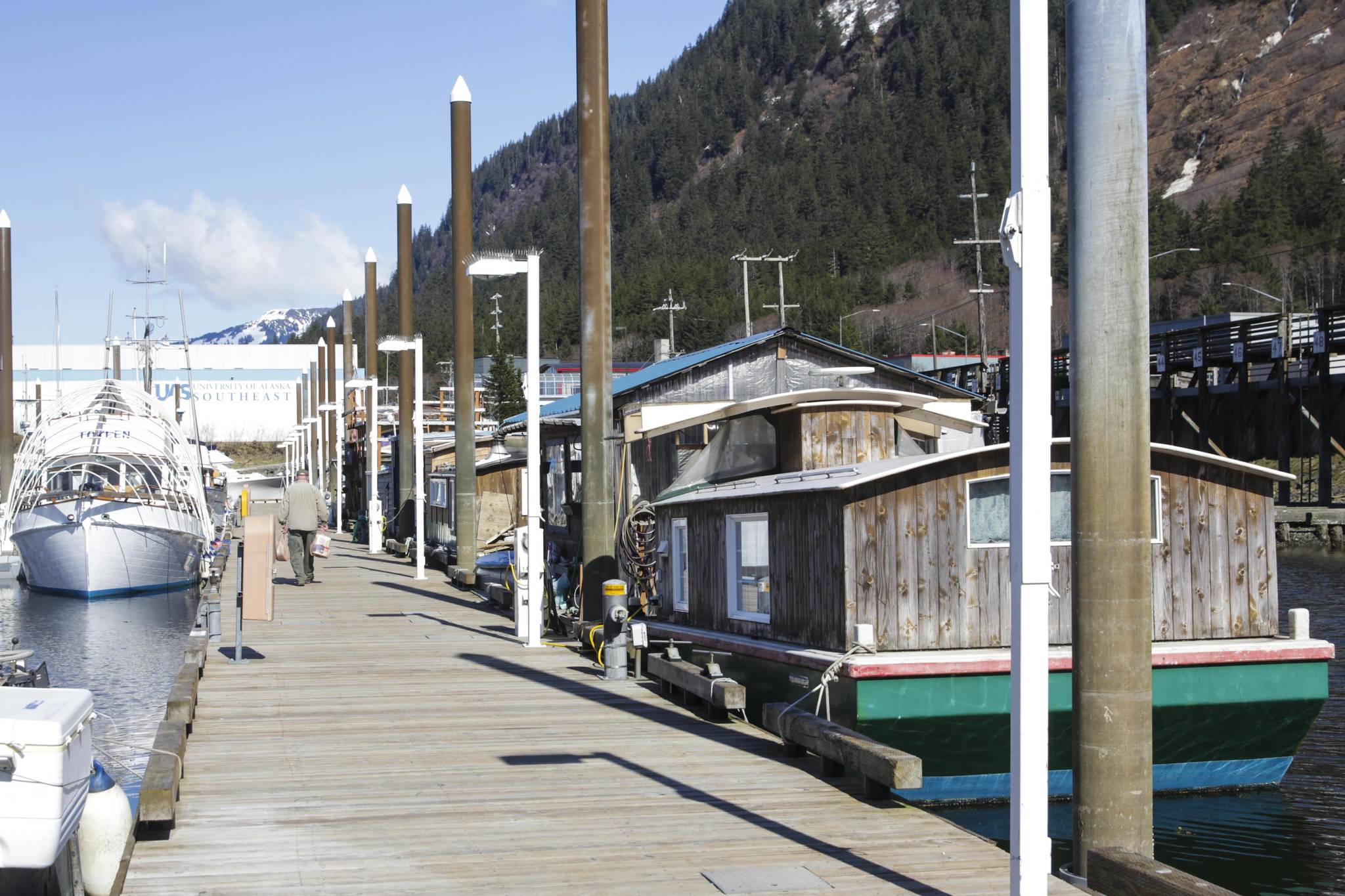This story has been updated to include new information.
A proposal to double live-aboard fees for residents in Juneau’s harbors has met with surprise and pushback from residents.
City and Borough of Juneau Docks and Harbors has been hard-hit by the pandemic, said port director Carl Uchytil in a phone interview. One of the proposals to help keep the organization afloat is to double the monthly residency fees from $69 to $138.
“It’s challenging times for docks and harbors enterprises. Docks isn’t going to see any revenue for months,” Uchytil said. “Our harbors enterprise is also somewhat dependent on tourism. We receive hundreds of thousands of dollars from charter fishing and whalewatching tours.”
About 140 of the 727 slips in Juneau’s harbors are live-aboards, Uchytil said. Many of those residents expressed discontent with the decision, arguing that live-aboards shouldn’t have to shoulder the burden of infrastructure and services that serve all harbor patrons. Residency fees brought in roughly $115,000 in 2020 last year, Uchytil said.
“If you’re going to charge me a fee for being a resident, show me how my money benefits me as a resident,” said Eric Antrim, a four-year resident of Juneau’s harbors, currently moored in Harris Harbor, in an interview. “There’s no special residential section of the docks. There’s no special shower for residents.”
There are currently no services that specifically benefit the residents for the fees that they pay, Antrim said.
The residential fee is on top of a per-foot moorage fee, which charges people depending the length of their vessel. The residential fee contributes to water, sewage, and garbage disposal for all harbor patrons, while Alaska Electric Light and Power charges non-transient residents separately for power.
“I love living in the harbor. I think the harbor staff do an incredible job and I’m proud to call it my home,” said Matt Leither, a Don D. Statter Harbor resident, in a phone interview. “I realize things cost money, and I’m happy to pay as long as it feels like I’m paying in an equitable way.”
Leither proposed the idea of increasing the moorage fees instead of the residence fees. Moorage fees apply to anyone who’s tied up to a CBJ pier, whether it be Auke Bay, Douglas, or downtown, and is calculated in step with the consumer price index.
For Antrim, though, the main focus is getting what residents are paying for: residential fees should support residential services, not services for all harbor patrons, and that residents shouldn’t be made to subsidize those costs for nonresidents.
“There’s a million issues, but the one I’m focused on is the service fees.”
As the CPI for Anchorage, which is used to call the rate, went down in 2021, Uchytil said, the moorage fees are actually scheduled to go down in July.
“Docks and Harbors is reeling from COVID and the impact of no tourism,” Uchytil said. “We have a responsibility to run a solvent enterprise by raising rates.”
The last time the Docks and Harbors board decided to raise the residency fees was in 2005, Uchytil said, stepping it up from about $36 dollars over three years until arriving at the $69 rate it’s currently at.
“Raising rates is the hardest thing the board has to deal with. The reason rates haven’t changed in a decade and a half is interest groups will say how it shouldn’t be them,” Uchytil said. “Moorage is kind of the third rail. Boards don’t want to deal with it.”
Aside from residency fees, Uchytil said, the city is also looking at doubling the moorage fees for the large-vessel mooring areas at the Intermediate Vessel Float at Statter Harbor and the Steamship Dock downtown. The fees are graded, with larger vessels paying in a higher category of moorage fees than smaller ones, Uchytil said.
Other modifications that residents have asked for will also have to be paid for somehow, Uchytil. Oft-requested features include more security cameras, security gates and safety ladders for people who fall in the water. One of Antrim’s neighbors drowned that way in the last several years, Antrim said.
A special Docks and Harbors board meeting will convene to consider the next steps on May 19, Uchytil said, after which their proposal will go to the Assembly.
• Contact reporter Michael S. Lockett at (757) 621-1197 or mlockett@juneauempire.com.

